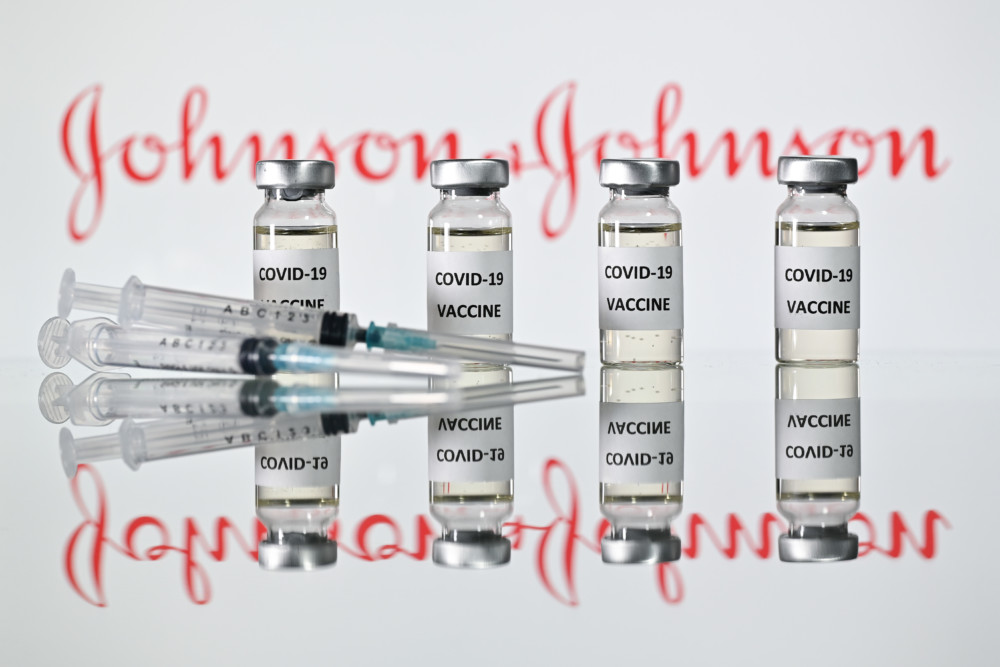Lisa Krieger
The Mercury News
WWR Article Summary (tl;dr) On Saturday, the FDA gave the official go-ahead for use of Johnson & Johnson’s one-dose COVID-19 vaccine.
San Jose
From the isolated ranch towns of the eastern Sierra to the immigrant communities of San Jose and other cities, California’s health experts eagerly await the arrival of Johnson & Johnson’s one-dose COVID-19 vaccine, saying it will expand supplies and boost access for the state’s most hard-to-reach residents.
“It’s like having a gun with 10 bullets in it — and now I have 10 more. That’s a better gun,” said Frank Laiacona, director of pharmacy for the rural Northern Inyo Health Care District, home to Mount Whitney and Death Valley, where residents may drive up to 200 miles to get a shot.
The Johnson & Johnson vaccine behaves much more like a regular vaccine than existing vaccines by Pfizer and Moderna, which both require two doses three to four weeks apart.
They won’t have to wait long. On Friday, a panel of Food and Drug Administration experts voted in favor of the new vaccine, saying it was proven safe and effective in clinical studies and completely protective against hospitalizations and deaths. On Saturday, the FDA gave the official go-ahead for use.
With approval, California is scheduled to receive 380,000 doses next week and 1.1 million total doses overall the next three weeks, California Gov. Gavin Newsom said at a news conference in Fresno on Friday. He did not specify where supplies will be targeted.
It can be stored in a traditional refrigerator for at least three months, making it simpler to use for areas in the state that do not have the ability to keep the mRNA vaccines at super cold temperatures. And because it is a single shot, it does not require a follow-up visit.
While studies show the Pfizer and Moderna vaccines were roughly 95% effective in protecting mild, moderate and severe cases of COVID-19 after a second dose, Johnson & Johnson’s trials showed somewhat lower efficacy of 86% against severe forms of COVID-19 and 72% against moderate and severe illness. But comparing the three vaccines is challenging because of differences in the designs and dosing regimens of the clinical trials — and the new vaccine has important advantages, say experts.
“This will be a game-changer,” said Santa Clara County supervisor Otto Lee at Friday’s opening of a new COVID-19 vaccination location at East Valley Clinic in urban East San Jose, which serves a predominantly Latino community hard hit by the virus.
The most immediate advantage, said experts, is expanded supplies. Pfizer and Moderna, alone, can’t make enough vaccines to quickly protect everyone. The recent emergence of variants has heightened the urgency of vaccinating as many people as possible. If the virus can’t multiply, it can’t mutate.
Johnson & Johnson has promised to deliver enough doses by the end of March to vaccinate more than 20 million Americans. It expects to deliver 100 million doses by the end of June.
The J&J vaccine also uses a more traditional approach than the Pfizer and Moderna vaccines — enlisting a harmless virus called an adenovirus, rather than messenger RNA, to carry a genetic code. So it does not require extremely cold freezers.
“It’s the jackpot. It is wonderful. It will allow us to go to farms without refrigeration constraints,” said San Jose physician Dr. Walter Newman, who vaccinates agricultural workers in the fields of Monterey, San Mateo and Santa Clara counties.
After a compressor malfunctioned in a Mendocino County freezer last month, 830 doses of the Moderna vaccine had two hours to be injected before they spoiled. Faced with a “use-it-or-lose-it” crisis, and far from any backup facilities, Adventist Health Ukiah held a last-minute and stress-filled mass vaccination clinic.
In the vast and windswept Owens Valley, “having patients come in for a single dose, logistically, is incredibly much more simple than having to arrange two separate visits,” said Laiacona. The high desert region “has lots of space to roam — but that makes people more dislocated from a health care facility.”
With easier access, more people will opt to be vaccinated, he predicted. And if fully vaccinated, the region’s isolation will prove a blessing, he said. “There is a real ability for us to become a safe harbor,” free of virus.
Returning for the second dose is hard for other reasons too, said physicians.
It’s difficult to track and schedule a second dose for migrant farmworkers who move from one county to another county, so a vaccine requiring a single dose is a better option, Newman said. Vaccine distribution is a county specific process, with little intrastate coordination.
People also miss their second dose appointment because of scheduling conflicts due to work, childcare or other responsibilities, said Dr. Jennifer Tong, associate chief medical officer of the Santa Clara Valley Medical Center
“Or maybe someone felt a little achy just after the shot, and that’s not an exciting thing to go through again,” she said. “So they hope that one dose might be enough.”
For vaccine administrators, the single-dose regimen will ease operations and record-keeping.
“We have a very complex Excel spreadsheet that helps us track ‘second dose appointments’ and make sure that we keep adequate inventory,” said Tong.
“This would certainly simplify things, operationally.”
And with a one-shot vaccine, storage isn’t committed to second doses.
“It doubles our capacity for that type of vaccine,” she said. “This allows us to vaccinate twice as many people.”
———
Distributed by Tribune Content Agency, LLC.














































































































































































































































































































































































